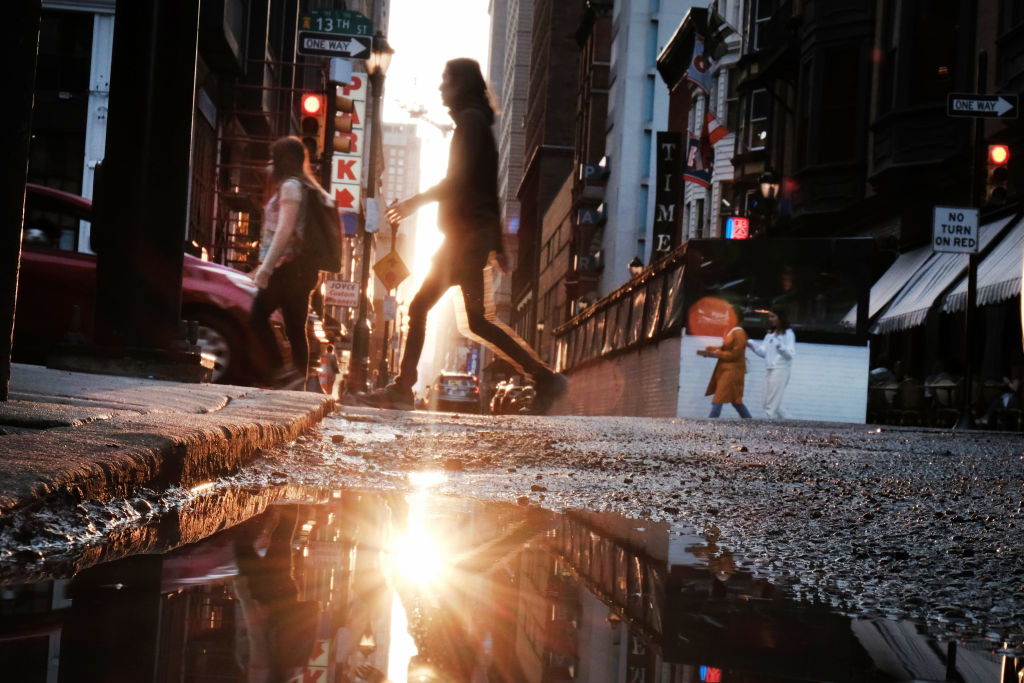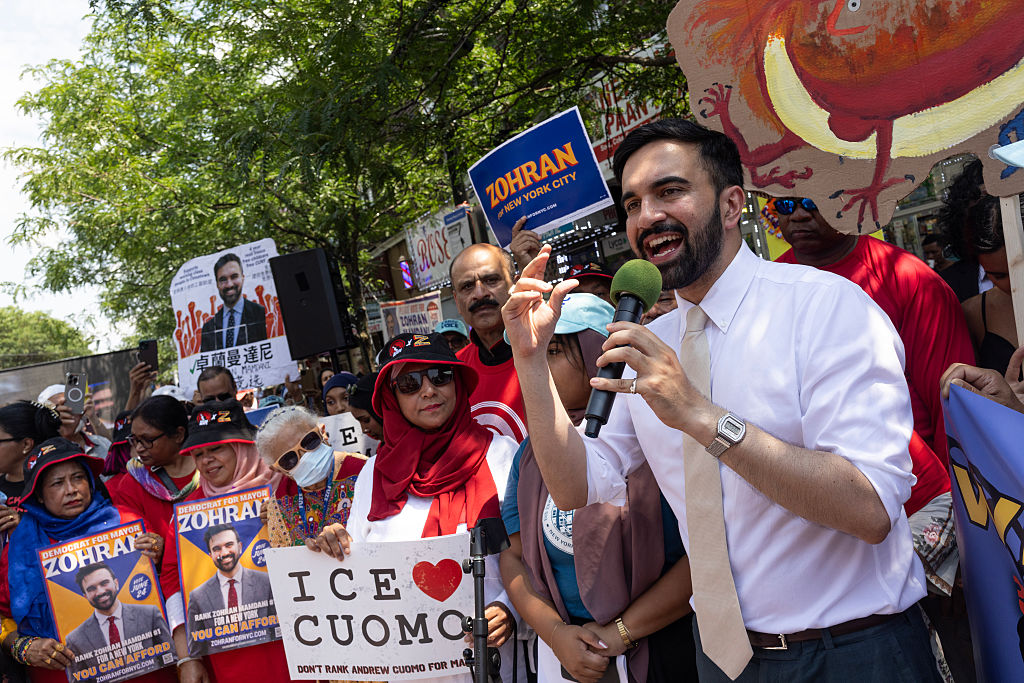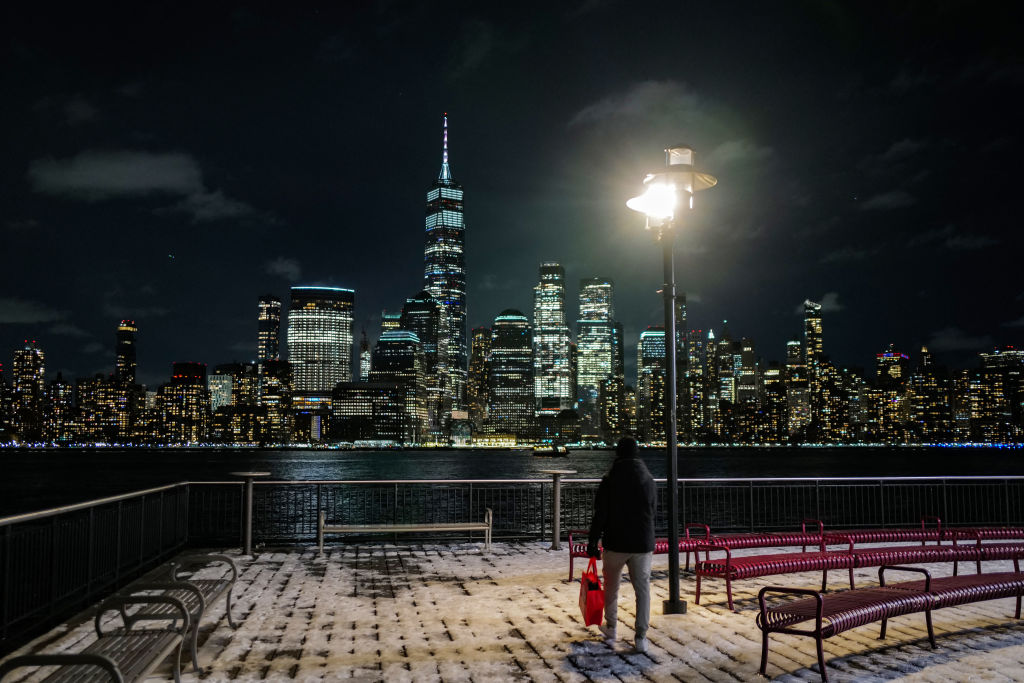The downtowns of America’s biggest cities are facing a crisis as thousands of office buildings sit vacant. They were abandoned first by occupants forbidden from gathering during the Covid pandemic — and they remain empty as many took a liking to remote work that enables them to “stay home in [their] pajamas all day,” as New York City mayor Eric Adams describes it.
Building owners are no doubt panicking as the value of their real estate continues to plummet, as are those affected by all the lost tax revenue. (A recent study, “Work from Home and the Office Real Estate Apocalypse,” found a 39 percent decline in long run value of New York City offices.) The government, in turn, is doing what the government does best: swooping in to throw money at a problem it created in the first place.
Renovating an enormous building designed for office work into living space, you see, is no easy — or cheap — task. It’s more than throwing up a few sheets of drywall and a greige backsplash, as every house flipper on HGTV would do in a matter of a few miraculous hours. Commodious conference rooms and open floor plans tend to have central plumbing, for one thing, as well as inconveniently placed sprinkler systems, heating and cooling systems, and so on, that makes the transformation to apartment units costly and sometimes tricky, if not downright foolhardy.
An acquaintance of mine recently converted a historic old school building into an apartment building with gorgeous, state-of-the-art living quarters. He’s worked in design and construction his entire life (for decades), building huge complexes across the country, specializing in student housing. He told me this twelve-unit project, tiny in comparison to what he’s worked on in the past, was the most difficult thing he’s ever done, because he wasn’t starting from scratch. He did it to preserve a piece of history for the community (thank God for him!), but if he had to do it again knowing what he knows now, he wouldn’t.
A New York Times piece on the topic cited a residential and commercial real estate guru’s opinion that “in Washington, DC, just one in about twenty office buildings is a good candidate for housing conversion… The conversion alone might cost about $400 or $500 per usable square foot… and would in many cases be more expensive than building a new development.”
Then there’s the matter of windows. Do people really need them? Not in their bedrooms, surely? That’s the thinking of Mayor Adams (love that guy), anyway. He expressed interest in doing away with a rule requiring developers to put windows in bedrooms, because, “When you’re just sleeping, it should be dark, you know?”
Adams is one of several political leaders looking to revitalize his city’s downtown business district after lockdowns forced folks to skedaddle and not look back. He’s so desperate to revitalize “underused” office space that he’s recommending the city “relax residential conversion regulations” for certain structures.
Mayor Muriel Bowser of Washington, DC, has introduced the city’s “Comeback Plan,” which includes “[adding] 15,000 residents to the Downtown population by adding seven million square feet of residential units, and [retaining] current residents to reach a population of 725,000,” among other things, by 2028. All these residents need a place to live, of course, and so Bowser has proposed drastically increasing tax breaks for developers who convert buildings into affordable housing.
Other cities are also working to streamline the conversion process by simplifying rezoning, loosening building requirements and offering grants and tax credits to developers. But will it work? Historically, the deciding factor in where a person lives has hinged on how far their home is from their work. If people no longer have to travel to work, will they suddenly want to live closer to where their work used to be? Will the proximity to bars and restaurants and FedEx Office & Print Centers and Planet Fitnesses and Banana Republic stores be enough to lure them into waking up in the space that once was home to their cubicles? Ew…
Perhaps people have discovered newfound joy in the suburbs and more residential areas to which they escaped during Covid. Erica Williams, director of the DC Fiscal Policy Institute, observed to PBS that the tax break model “is a very costly proposal for an unproven program.” The situation reminds me of what’s been going on in small-town Pennsylvania, where I live. After government regulations and free trade sucked the life out of so many towns and cities, government had the audacity to offer such worthless Band-Aids as the “Appalachian Regional Commission” to dole out grants — money we must prove worthy of receiving, even though it was ours in the first place — as a panacea to the destruction their policies caused.
Just like in rural Pennsylvania, the big cities can throw money at all the affordable housing projects they want, but if there is no work to draw people to downtowns, it will be an artificial edifice people will see right through. Don’t get me wrong: I’m all for robust downtowns and thriving, tight-knit communities. But when it comes to big-city progressives suffering the consequences of their overreach, my sympathies wear thin. And when I consider that people who live in urban areas tend to be more liberal, my pity disappears.
Unless the cost of office buildings decreases dramatically, which it might, modern skyscrapers and blocky concrete monstrosities with all the architectural charm of a shoebox will deteriorate and eventually be demolished. If I had my way, only the beautiful old buildings (most sturdily built, by the way) would be left, and people in need of housing would retreat to the countryside where they’d be happier and healthier, and downtown cities would wither, allowing market forces to start from scratch. How’s that for a Comeback Plan?

























